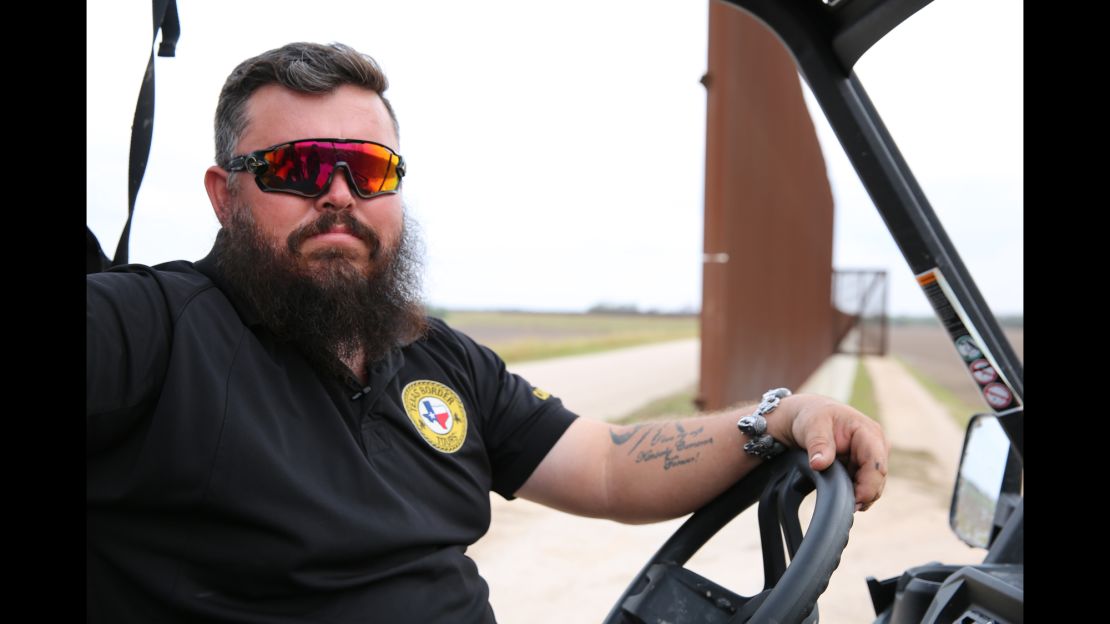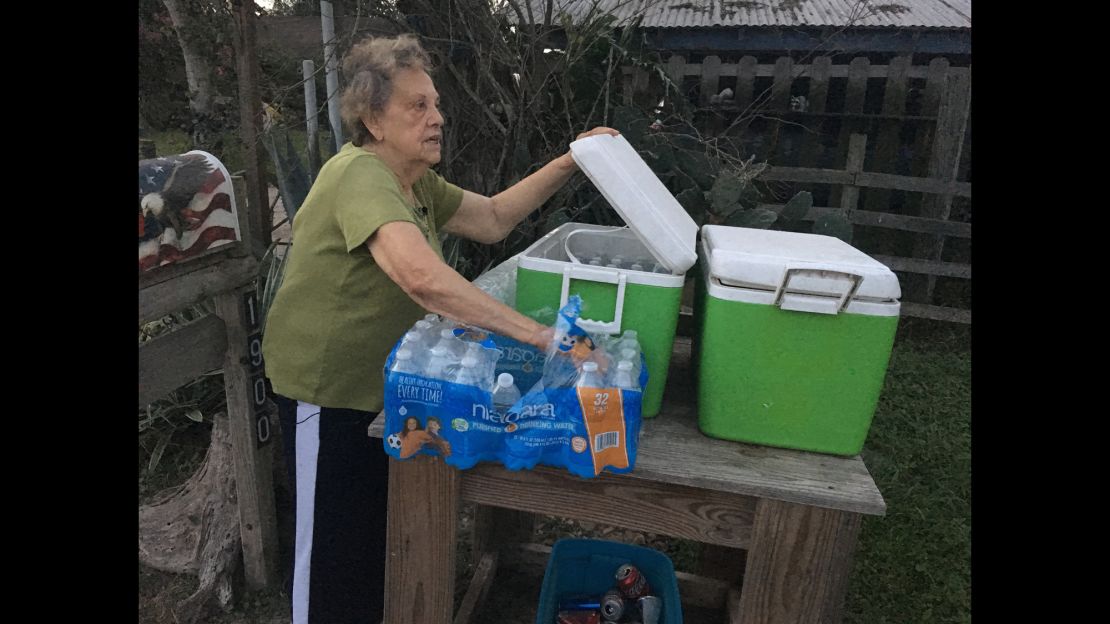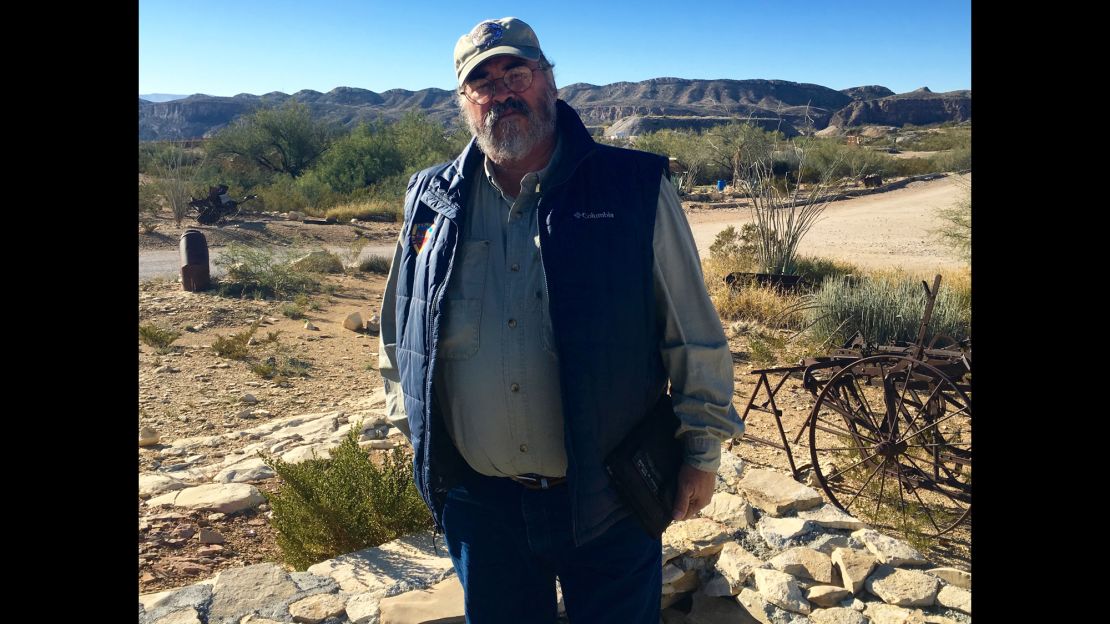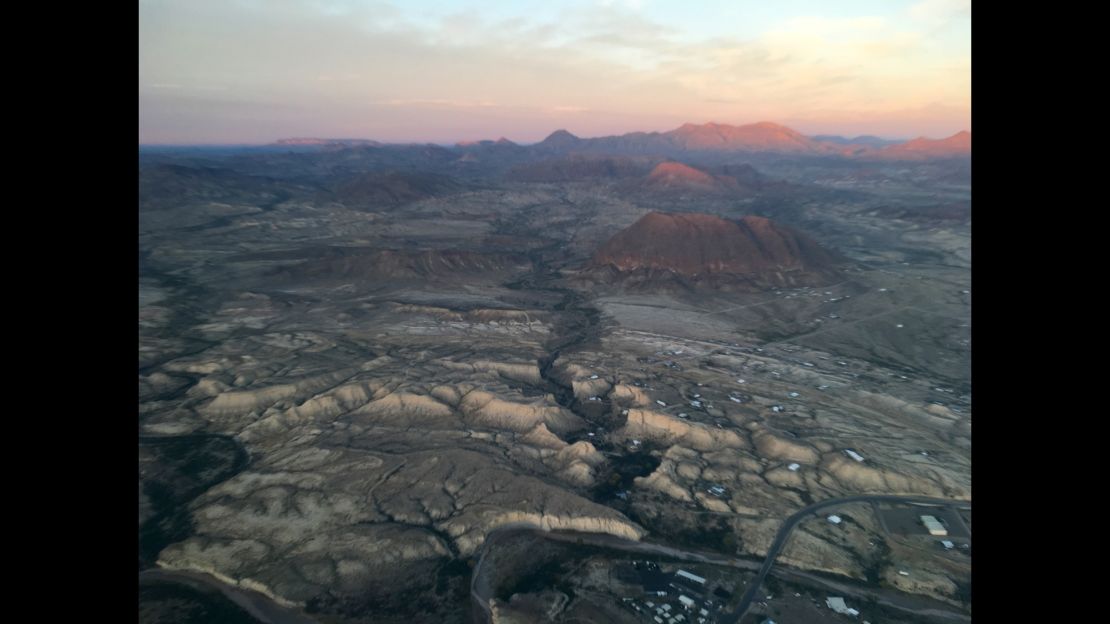Over the course of the last two months, CNN National Correspondent Ed Lavandera has traveled the length of the United States’ southern border with Mexico. As Donald Trump begins his term in office, border issues will be at the center of the president’s agenda. This series captures snapshots of life and the voices of the people who call the borderlands home. Watch “Before The Wall: A Journey On The Border” on CNN at 2:30 p.m. ET on Saturday.
Robert Cameron pushes through a thick wall of Carrizo cane and in a few seconds the Rio Grande and Mexico suddenly appear.
If you’ve never experienced standing at the country’s edge, it can be a surreal moment to so easily walk to the riverbank and stare across to the other side.
This is one of those places where there are no Border Patrol agents in sight and no customs checkpoints for miles. You feel alone. But then you notice a well-worn path coming out of the river where the tall bamboo-like cane has been flattened, and reality strikes: You’re not the first person to come through here.
In fact, that’s why Cameron has brought us here. Cameron, 39, operates Texas Border Tours and runs a small fleet of all-terrain vehicles that take tourists on a rugged, off-road chance to see the Texas-Mexico border up close.

A few months ago, Cameron recorded video of a group of men swimming across the Rio Grande with large packs in this very spot. He can’t say definitively that the men were smuggling drugs into the United States, but he’s says he’s seen enough to know that that’s probably what was happening.
The Rio Grande Valley in South Texas is one of the country’s busiest drug smuggling and crossing points for undocumented immigrants. In 2016, more than 186,000 migrants were captured by Border Patrol agents who also seized more than 326,000 pounds of marijuana.
“There is a problem, and anything to throw at it to fix the problem is good and people want a solution,” Cameron told CNN.
Cameron voted for Donald Trump and fully supports the President’s call to build a wall along the southern border.
“He tells it like it is,” Cameron said as he cruised past several miles of already existing border fence near the town of Progreso, Texas. “He doesn’t sugarcoat it. He is going to get it done.”
But Cameron says this even as he questions if a solid concrete wall will actually work. He’s seen what happened the last time the United States tried to build a wall, and that’s what he’s showing us now.
President George W. Bush signed the Secure Fence Act into law in 2006. To build the wall the federal government filed dozens of eminent domain lawsuits against private landowners to gain access for the wall’s construction.
The result was a border fence that roughly followed the general path of the Rio Grande but created a no-man’s land between the fence and the river. It also left gaping holes in the wall so that the landowners could access their land south of the wall.
Cameron’s ATV cruises past several miles of border fence, kicking up a trail of dust. It doesn’t take long to find a number of large openings in the fence.
“This is definitely not secure,” Cameron said. “I don’t know how that impenetrable wall is going to be built. People need access to their land.”
On the surface, Cameron might not seem like a typical Trump supporter.
He and his parents were born in Mexico. He was 8 years old when his family moved legally to the United States in 1985. Cameron became a US citizen 13 years later.
Views from the border
Criss-crossing the border to visit family and friends is still part of his weekly routine. He thinks politicians and the news media have painted a distorted picture of what life is really like here.
“It’s not as bad as people make it seem to be,” Cameron told CNN as he led a Rio Grande tour near the town of Progreso, Texas.
He also knows that although the rest of the country sees border issues as black and white, life here is more cloudy and nuanced.
“I do have relatives and friends who are here illegally,” Cameron said. He doesn’t want to see them rounded up and deported. “Comprehensive immigration reform definitely would be good. Something will allow people to come and do it the right way.”
The idea of American citizens caught in a no-man’s land between is something 88-year-old Pamela Taylor can only laugh about. She’s one of those Brownsville, Texas, residents that lives in what she likes to call a “gated community.”

Taylor was born in England and married a soldier from South Texas just after World War II ended. In 1946, the couple moved to the house she still lives in today, just a football field’s length from Mexico.
For decades, she’s watched undocumented migrants emerge from the Rio Grande and quickly scatter through her neighborhood in hopes of eluding Border Patrol agents. Every night she leaves bottles of water for the migrants and the agents engaged in this never-ending cat-and-mouse game.
“You have to be Christian about it. You know it’s not good to see people starve,” Taylor told CNN.
Taylor has become a bit of a border celebrity. She’s opinionated, charming and quick with stories that surprise. Like the time she says she found a “40-kilo” stash of marijuana under some bushes in her yard and the day she found an undocumented migrant sitting in her living room.
“He had come in and used the bathroom facilities, shaved, cleaned up and everything and he was in the rocking chair watching the Border Patrol go by,” Taylor calmly recounted.
At the edge of the long drive way leading to her home, there’s a large sign that reads “We’re part of America. We need representation and protection. NOT A FENCE.”

Despite that, Taylor supported Trump and wants to see the country crack down on illegal immigration. But she finds the idea of a wall rather ridiculous. The current border wall has surrounded her home for almost 10 years and she says nothing has changed.
“How did they get through that wall? It’s been here since ’07,” Taylor said. “That wall is not going to stop them.”
As Trump takes office the Rio Grande Valley is bracing for the next chapter. As the sun set on Taylor’s home she shared a sentiment you often hear from the people who live here.
“I would like for Mr. Trump – I would even feed him – if he will come down here and talk to the people. He is doing exactly what the government did to us in the beginning. He’s not asking how it’s going to affect the people that live here.”
The view from Big Bend National Park

Spend any length of time along the United States’ southern border and you’ll hear a familiar story. It’s usually about the days when crossing this international border was as easy as walking to the curb to check your mailbox.
The Texas-Mexico border is a mixture of several urban locations like Brownsville, Laredo and El Paso but most of it is hundreds of miles of vast, wide-open spaces.
“People here have friends on both sides of the border,” said Marcos Paredes. “I see some communities that have been really closely linked forever.”
Paredes, 60, is a former Big Bend National Park Ranger and now pilots scenic airplane tours over this majestic West Texas landscape. He’s lived in the far-flung border outpost of Terlingua for 40 years.

If Trump and Congress follow through with his campaign promise of building a wall along the entire length of the US southern border there are serious questions and doubts – even among Trump’s supporters – of how that would be done in this terrain of West Texas.
Paredes thinks the best way to make people understand what a waste of time and money it would be is by taking to the skies.
In a single-engine Cessna, Paredes takes us on an aerial tour over some of the most stunning landscape you’ll ever see. It’s a geologic paradise as breathtaking rock formations rise in the distance. Below our plane, dramatic canyons and cliffs carve through the beige and rusty-orange colored limestone. For hundreds and hundreds of miles there are few signs of life.
“I have taken many folks up and this notion of a wall is something they supported,” Paredes told CNN as he piloted his plane over Terlingua Creek. “And then they flew over this country and realized, ‘How are they going to do it?’ It can’t be done.”
In Paredes’ eyes the notion of a wall is “divisive.” He argues that a stronger relationship with Mexico would be more effective.
The view from Boquillas del Carmen, Mexico
If you want to reach this hidden Mexican border town it takes a little work.
All you have to do is take a two-hour drive deep into Big Bend National Park, follow a scenic footpath to the edge of the Rio Grande and wave across the water to Adrian. He’ll probably be waiting on the other side with a flat-bottom boat and he’ll paddle over to pick you up for a few dollars.
Then you can climb on a donkey for the mile-long ride to reach Boquillas.
For the lucky tourists who make the journey, it’s worth the trouble to get a taste of the tamales at Jose Falcon’s Restaurant, run by his daughter Lilia.

“It’s a very good life here,” Lilia Falcon told CNN. “Everybody takes care of the tourists over here because we live from the tourists. That’s all there is.”
On the Mexican side of the border, the closest town to Boquillas is 160 miles away. The town has about 200 residents.
Boquillas captures the deep connection of the borderlands. Until September 11, 2001, you could basically cross the river freely here. Neither the US government nor the Mexican government seemed to pay much attention. That all changed after 9/11.
Views from the Border
The border crossing was shut down and Falcon’s restaurant went out of business. “It was really hard,” Lilia Falcon said. Many townspeople moved away. But in 2013, the United States re-established the Boquillas Port of Entry.
Now the restaurant is back in business and the town is growing again. Electricity was non-existent until a few years ago, when a solar farm was built on the edge of town.
“The word is spreading out more that it’s very safe to come here,” Lilia Falcon said.
The times have changed, and traveling to and from Boquillas now requires a passport. The US customs checkpoint is inside a ranger station in Big Bend National Park.
But Lilia Falcon worries about the future and what Trump’s immigration and border security plans might mean for the future of this little village. She can’t help but wonder if, in the name of national security, this official border crossing could be closed again.
“Then the town will be dead again,” said Lilia Falcon. “It would be hard.”
CNN’s Jason Morris and Joel De La Rosa contributed to this report.


























